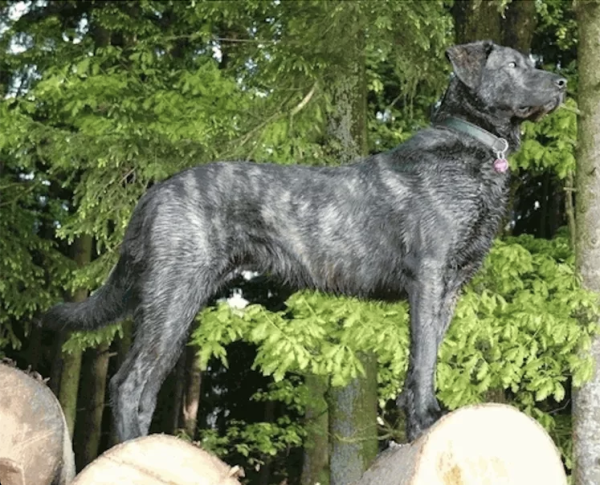
Most historical accounts of the Labrador Retriever point to the St. John’s Dog (named after the capital of Newfoundland) as being the foundation for the breed, but there is an intriguing suggestion made in Mary Roslin-Williams’ book, The Dual-Purpose Labrador, that comes by way of a photograph.
The image (which we don’t have permission to reprint here) is of a Portuguese Cattle Dog, aka the Cane di Castro Laboreiro, a breed originating from one the oldest regions of Portugal: Castro Laboreiro, a village in Northern Portugal. It’s not hard to see why Roslin-Williams speculated that this breed was at least part of the “recipe” that made up the beloved Labrador Retriever. Author, Heather Wiles-Fone, also pointed out in her book, The Ultimate Labrador Retriever, the similarity of the name, “Laboreiro” with “Labrador.” Perhaps it was just a coincidence.
But maybe not.
The Portuguese were prodigious seafarers, and since the early 1500s, they had been making trips to the fish-rich waters of St. John’s Bay where it was very convenient to fish, moor their ships, and trade. The Portuguese would not have been the first seamen to bring along dogs to guard their ships in port, nor would those dogs have been the first canines to visit the “local ladies or lads” for a little romance.
But ultimately, the phenotype of the dog in the photograph offers the most compelling reason to suspect that Portuguese Cattle Dog DNA may be in the Labrador Retriever, an observation made by several others. In 1947, Clifford L. Hubbard described the Portuguese Cattle Dog, and much of his description could be applied to the Labrador Retriever.
In a later book written by Mary Roslin-William in 1975, All About the Labrador, she wrote of an observation made by someone who routinely traveled through the border between Spain, France, and Portugal. He had noted local dogs working cattle and at first, believed them to be poor examples of Labrador Retrievers until he learned that they were an ancient working breed native to the district: Laboreiros.
Today, the Portuguese Cattle Dog/Cão de Castro Laboreiro is one of the rarest of breeds with a worldwide population estimated somewhere between 200-500 dogs. This may be due, in part, to the breed being rarely seen outside its region of origin until the mid 20th century. As farming changed in the late 1800s, the dogs were left without their traditional work and, some sources say, were abandoned and forced to hunt to survive, some killing livestock they had once protected. A few dedicated breeders determined to save them by breeding them to be companion dogs, not working guard dogs, and in 1914, the breed made its first appearance at a Portuguese dog show.
If the worst were to happen and the Laboreiro vanished, echoes of it would still beat in the heart of the wonderful Labrador Retriever – at least, for those who believe that one breed was built upon the other.
Image: Cao de Castro Laboreiro byn Schiowa and shared under the Creative Commons Attribution-Share Alike 3.0 Unported license.
